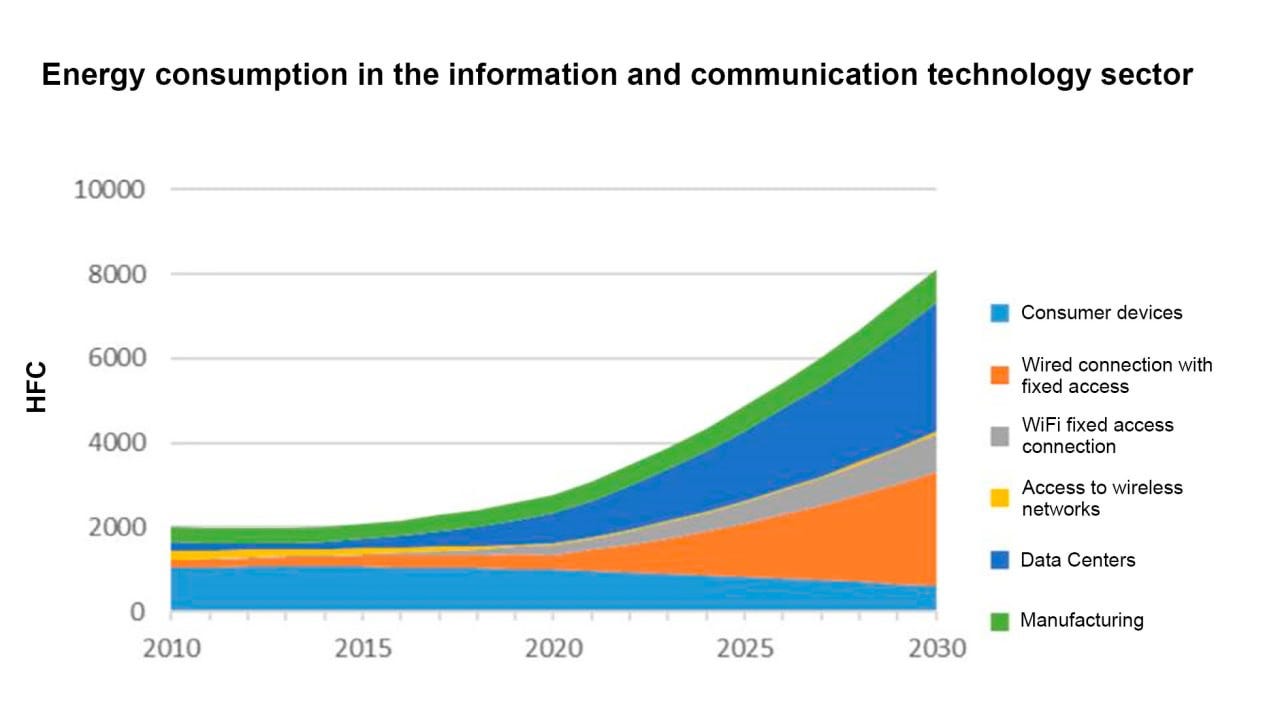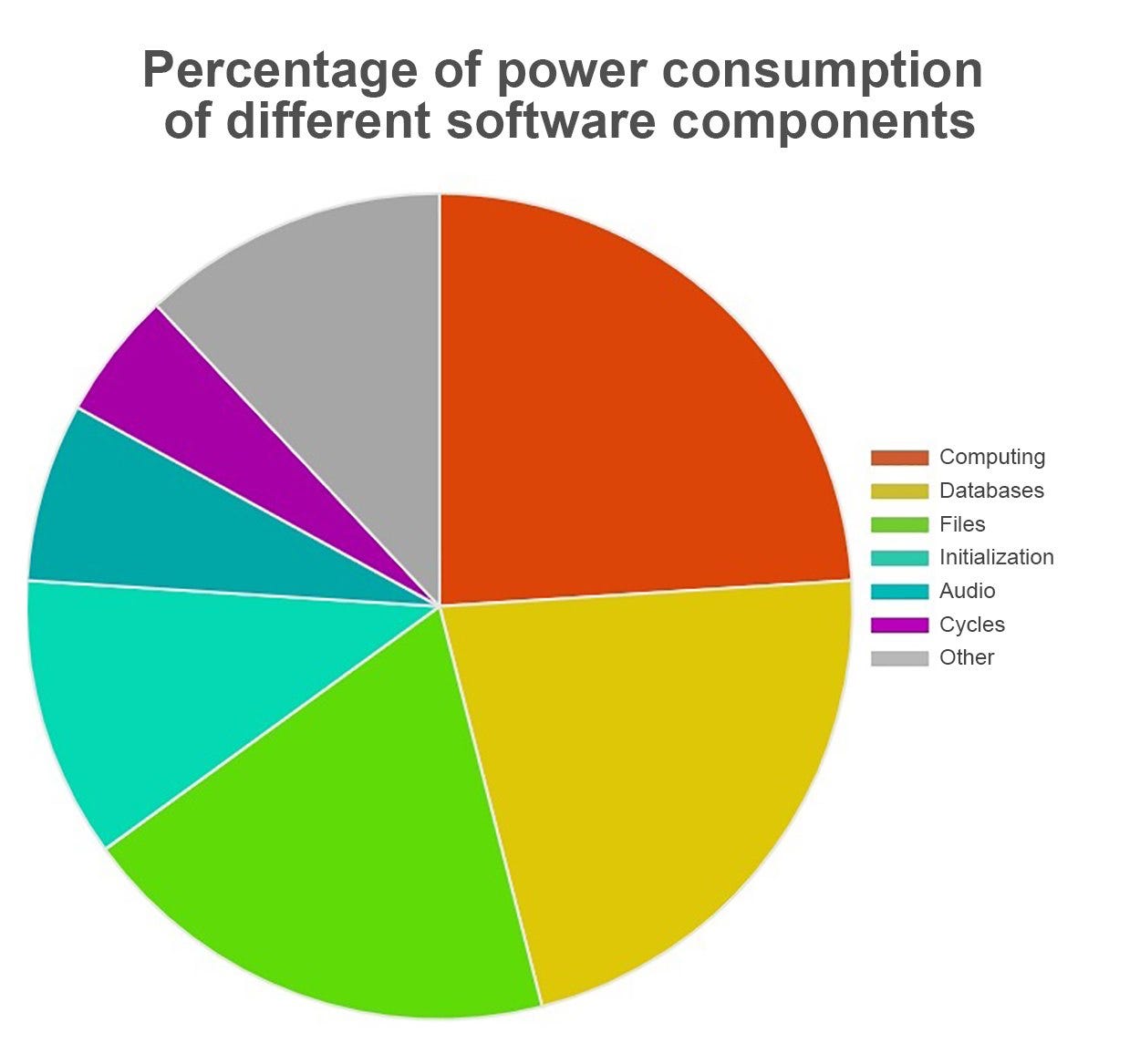Software development has become an integral part of the modern world. Every day we are faced with the results of this work, sometimes without even realizing it. But the advantages that modern technologies provide us are associated with serious environmental problems. One of these problems is the high energy consumption of computers that humanity uses. Recently, the concept of "green programming" has been gaining popularity. This approach suggests developing and implementing software taking into account the impact on the environment. The main idea of this approach is to minimize the negative impact of the IT industry on the environment and strive to maintain the high efficiency and functionality of finished products.
Energy consumption in the IT industry
The modern IT industry is one of the largest consumers of energy in the world. Data centers and server farms require enormous amounts of electricity to keep applications running smoothly and store huge amounts of data. According to recent studies, the share of energy consumption in the IT sector is growing annually by 6--9% and may reach 20% of total consumption by 2030. Data center energy consumption is a major part of this problem. They operate around the clock, ensuring stable operation of servers, but also consuming huge amounts of energy. Maintaining the necessary conditions, for example, cooling servers and equipment, also requires significant costs.
Such large-scale energy consumption has an extremely negative impact on the environment, as it leads to air pollution and greenhouse gas emissions. To solve this problem, it is necessary to strive for energy efficient practices and developments aimed at reducing energy consumption in the IT sector. Even using the example of one technology, you can see a huge difference: Bitcoin uses 707 kWh to conduct one transaction, while Dogecoin needs only 0.12 kWh, i.e. 6000 times less! According to the Cambridge "Bitcoin Energy Consumption Index", maintaining this cryptocurrency costs over 120 terawatt-hours per year --- that's more energy than Norway consumes in a year, and about half the energy consumed by the UK. An environmentally friendly approach to IT should be comprehensive and include the development of efficient algorithms, optimization of architectures and hardware solutions, and the introduction of renewable energy sources.
Principles of green programming
The main components of green programming are the efficient use of energy resources and reducing the negative impact on the environment. One of the tools of this approach is the choice of environmentally efficient technologies and programming languages. This is one of the first steps towards green programming: such tools allow developers to create software with an environmental approach, using fewer resources. For example, using compiled languages with a low level of abstraction can reduce energy consumption during program execution. Developers can optimize the power consumption of software products by improving algorithms and using efficient caching methods. Green programming also involves efficient data management: data compression can be used as well as optimal loading and uploading strategies to reduce the amount of information transferred and processed.
Companies and developers can implement renewable energy practices, such as solar panels or wind turbines, to reduce the environmental impact of software development and operation. For example, Google uses this approach, actively using renewable energy sources.
Raising awareness and training developers on green programming through special programs and courses helps to integrate environmental principles into software development, minimizing its negative impact on nature. Those developers who follow these principles can make a significant contribution to creating a more sustainable and environmentally responsible IT landscape.
Environmentally responsible programming
In modern software development, there is a desire to minimize the negative impact on the environment. This is achieved through the implementation of environmentally responsible programming principles. One of the key aspects of this approach is the use of effective technologies and practices that help reduce energy consumption during the development and operation of a software product. Over the past 10 years, the volume of data processed has increased 38 times, so developers are actively looking for ways to optimize code so that it requires less computing resources and, accordingly, energy.
Another important aspect is the selection and use of renewable energy sources. Environmentally conscious companies are looking to switch to green energy for their server centers and development offices. In addition, developers are actively working to improve waste management processes. This includes properly disposing of electronics, as well as switching to more environmentally friendly materials in equipment manufacturing. The environment is becoming an important aspect in software development decisions. Environmentally responsible programming not only reduces the negative impact on the environment, but also contributes to the sustainable development of the industry as a whole.
Challenges and prospects of green programming
Green programming, although it represents an important direction in the development of the modern information technology industry, but, like everything new, it faces challenges and obstacles. One of the main challenges was the need to change established practices and culture of software development. Developers accustomed to traditional methods may find it difficult to implement new environmental principles. In addition to the developers themselves, companies and the government need to be convinced of the need to introduce green technologies. It is worth considering that for them such changes may bring additional costs for equipment and staff training.
Another challenge is the heterogeneity of approaches to green programming in different companies. There is no single standard. Each organization may interpret and implement environmental responsibility principles differently. This can make it difficult to compare and evaluate the effectiveness of green technologies. Nevertheless, the prospects for green programming are very encouraging. With the development of technology and increasing awareness of the importance of environmental aspects, businesses are increasingly challenging themselves to reduce their negative impact on the environment. In addition, the adoption of green technologies can lead to reduced energy costs and improved overall efficiency.
Despite existing obstacles, green programming represents an important step towards creating a more sustainable and responsible IT industry. It opens up new perspectives for developers and companies seeking balanced development that takes into account the needs of nature and society.
Sources:
Between 10 and 20% of electricity consumption from the ICT sector in 2030?, Enerdata (__https://enerdata.net**)*
Why Green Coding is a Powerful Catalyst for Sustainability Initiatives, IBM (https://ibm.com)
Green coding: What is it and why is it important?, STL Partners (https://stlpartners.com)
By Aleksandr Makarov, software developer Published on October 18th 2023



